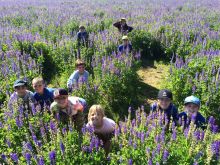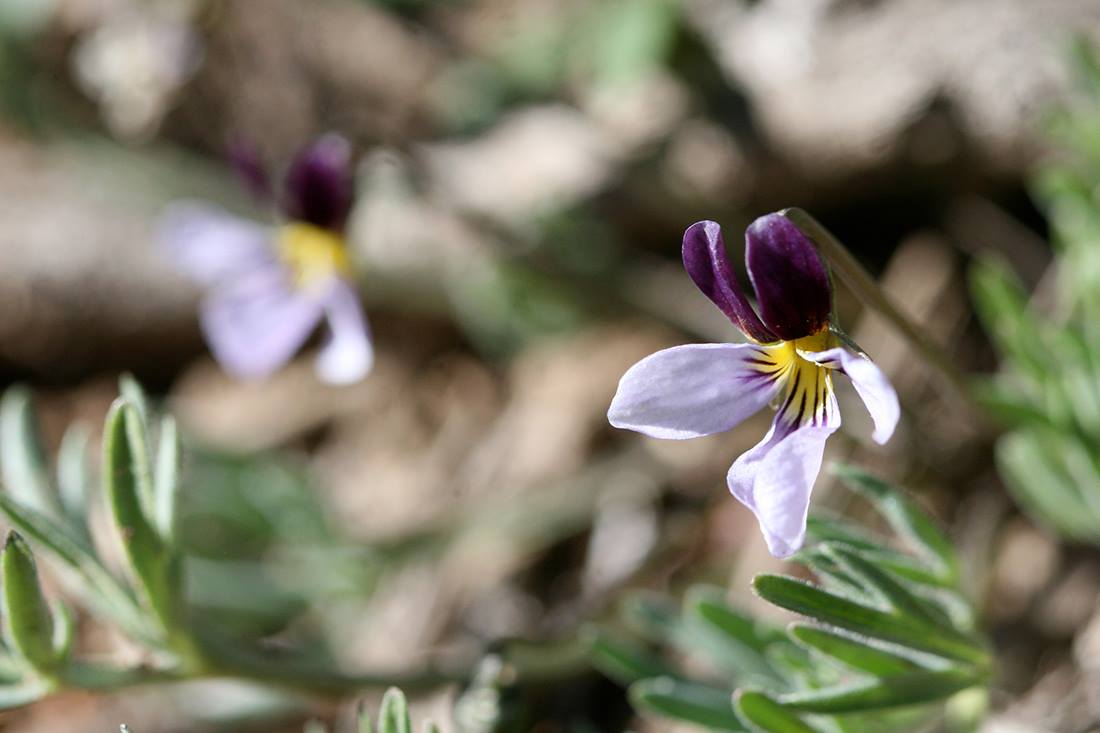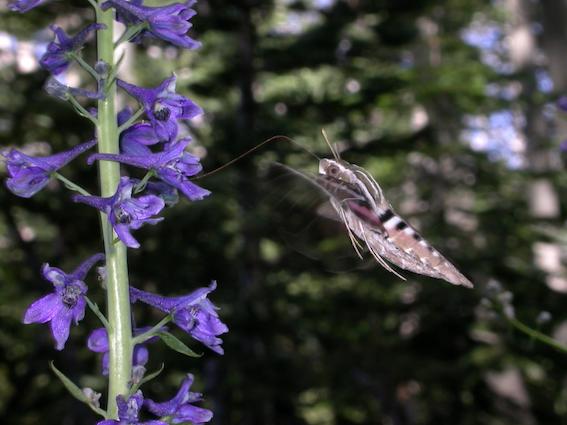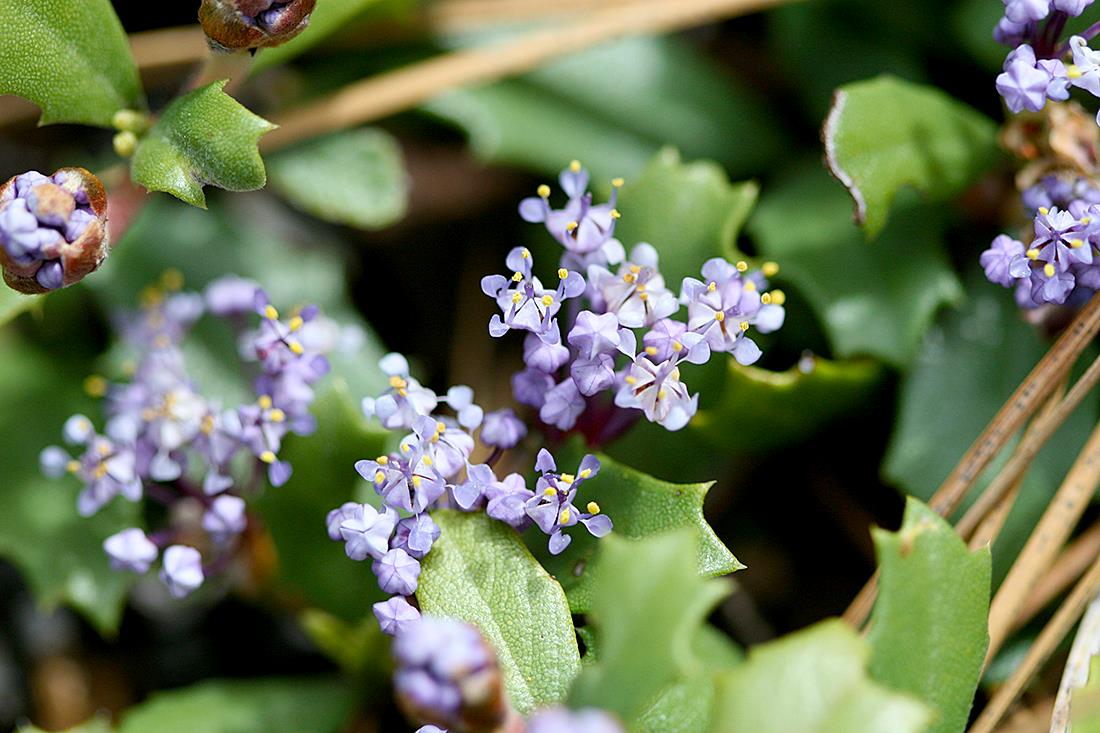
Last week I spoke about the wildflowers that enchant us with their beauty for a short time each spring and early summer (and sometimes mid-summer depending on the amount of snow that we have, like this year).
The leisurely excursions discussed in last week’s blog post are fantastic adventures for the entire family. But there is one thing that would make it better: knowledge of what it is your looking at. With that in mind, I put together a collection of Lake Tahoe’s finest wildflowers to use as a little guide the next time you find yourself immersed in Mother Nature’s floral bouquet.
Enjoy!

Beckwith's Violets: A flower that is immediately endearing, the tiny Beckwith’s Violet is an example that immense beauty can come in tiny packages. A low-to-the-ground plant that enjoys growing many leaves, Beckwith’s Violets express themselves in a rainbow of colors with a three-petaled, dainty flower standing upon an erect stem. A plant that enjoys dry, rocky, clay-enhanced soils high atop mountain peaks, this is a variety of wildflower that is made for Lake Tahoe.
Camas Lily: The Camas Lily is one of those flowers that makes you stop and take notice. Standing tall against the forest floor, with its long stem and proudly appointed flowers standing atop the stalk, these are nature’s example of elegance mixed with toughness. A plant that is known for growing in difficult areas and soil that is laden with heavy clay, its fine detail in beauty is mesmerizing. A member of the asparagus family and native to Canada and the United States, the Camas Lily is a plant with historical importance as it was a vital aspect to the diet of American Indian tribes.
Towering Larkspur: Maybe the tallest wildflower of the forest, this incredible giant can stand 3 to 8 feet in height. Along its tall, straight stem are clusters of tiny four-petaled flowers that each connect via a mini pedicel. A lover of moist areas, especially near lakes, streams and rivers, the Towering Larkspur is a favored flower during the melt outs of our bigger winters.
Lupine: A member of the legume family, Lake Tahoe’s lupine are a fantastic treat. Spreading out over immense fields, these prolific display of blooms can take over entire beaches, such as the beaches near Skylandia and Lake Forest as well as Commons Beach in Tahoe City. When this plentiful blooming occurs, it deserves the time to take notice. Lupine can come in various colors and tend to showcase themselves in purples, blues, whites and pinks, although there are more than 200 varieties. Enjoying well-drained soil, they prefer full or partial sun and can grow between 1 foot and 5 feet tall.

Mule’s Ear: A true staple to Tahoe forests, Mule’s Ear are one of those plants that delight year round. For one thing, their bright golden yellow flowers that stand tall, shadowed by their equally representing leaves, tend to spread their magnificence through the mountains for a longer period of time than any other Sierra Nevada wildflower. But another fun benefit to the Mule’s Ear is that when they dry away with the changing of the seasons, their leaves remain tall and proud and make fun noises with the winds of autumn. It is important to note that the Mule’s Ear should not be confused with Arrowleaf Balsamroot, which looks very similar. The easiest way to determine the difference is by the height of the flower. Arrowleaf Balsamroot has a flower that is much closer to the ground than the Mule’s Ear. The leaves of the Mule’s Ear are also taller and narrower.
 Mahala Mat: A lovely ground shrub, this native to the Pacific Northwest delights our forests with beautiful light purple flowers. Also known by the names of Squaw Mat, Pinemat and Prostrate ceanothus, this member of the buckthorn family Rhamnaceae enjoys living among coniferous trees and vast spaces.
Mahala Mat: A lovely ground shrub, this native to the Pacific Northwest delights our forests with beautiful light purple flowers. Also known by the names of Squaw Mat, Pinemat and Prostrate ceanothus, this member of the buckthorn family Rhamnaceae enjoys living among coniferous trees and vast spaces.
Please visit our Daytime and Nightlife sections to learn about wonderful events to add to your excursion out in nature while visiting Lake Tahoe.
Photos courtesy of the Tahoe Institute for Natural Science


 A longtime Lake Tahoe local, Shanie is a freelance writer, Vinyasa Flow yoga teacher and positivity warrior. A true lover of the the gorgeous Tahoe region, she connects with the serenity of the mountains via skiing, biking and backpacking. She also believes in the gift of yoga and its way of allowing one to become his or her true best self, a passion she shares with the world with her online yoga studio.
A longtime Lake Tahoe local, Shanie is a freelance writer, Vinyasa Flow yoga teacher and positivity warrior. A true lover of the the gorgeous Tahoe region, she connects with the serenity of the mountains via skiing, biking and backpacking. She also believes in the gift of yoga and its way of allowing one to become his or her true best self, a passion she shares with the world with her online yoga studio.





